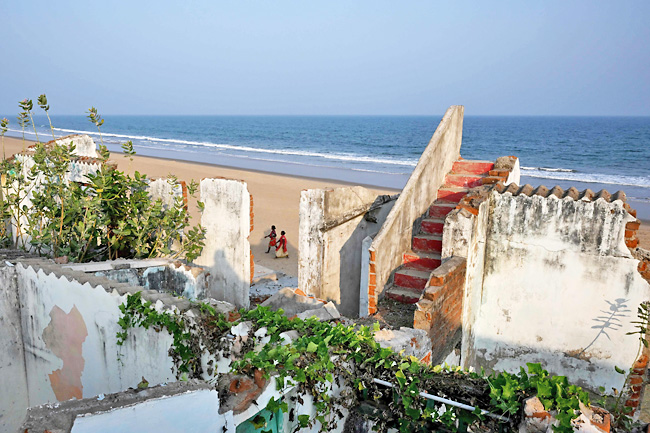SATABHAYA (AFP) – The gentle roar of the ocean lulled Indian mother-of-two Banita Behra to sleep each night, until one day the encroaching tide reached her doorstep.
Behra is among hundreds of people from the disappearing and largely abandoned coastal village of Satabhaya, whose displaced former residents have been officially recognised by the government as climate migrants.
She grew up watching helplessly with her neighbours as rising seas, driven by climate change and upriver dams, slowly claimed the land around them.
“We were doing well there. We used to catch fish,” the 34-year-old told AFP.
“But the sea came nearer and took away our homes.”
Satabhaya is the hardest-hit of several rural idylls along the seafront in eastern Odisha, a state that has also been battered in recent decades by tropical cyclones and floods of increasing ferocity.
Behra’s home is now underwater, 400 metres out to sea, while a few of her neighbours who refused to move live in makeshift thatched huts by the new shoreline.

A weathered brick wall is all that remains of what was once a seaside temple.
Last year the Odisha government announced funds for a resettlement colony in Bagapatia, 12 kilometres inland from their village, giving each family a small plot of land and USD1,800 to build a new house.
Authorities said the scheme was the first of its kind in India for those forced to leave their homes by climate change.
But life in Bagapatia has been tough for the new arrivals: without seas to fish and farmland to cultivate, many are depressed by having lost their self-reliance and way of life.
In order to survive, most of the community’s men have had to take jobs to work as labourers out of state.
Behra’s husband is now away 10 months of the year, working on the opposite side of the country and sending money home to provide for their two young children.
“We miss him, some days I feel like crying,” she said. “But what can we do?”
Rising global temperatures driven by human activity have led to a consequent rise in global sea levels with the melting of polar ice caps.
Odisha, where millions of people live in coastal settlements along the Bay of Bengal, is particularly vulnerable to the encroaching waters.
Satabhaya sits at the mouth of the mighty Mahanadi River Delta and its coasts were once replenished by earth carried by the currents from inland.
But an upriver dam-building spree in the decades since India’s independence from Britain in 1947 drastically cut the amount of sediment deposited where the waterways met the sea.
That left Odisha’s coasts vulnerable to erosion and lacking a critical defence against rising sea levels.
Across the state, sea levels increased by an average of 19 centimetres in the five decades to 2015, according to a 2022 paper co-authored by researchers from the state’s Berhampur University.
Tamanna Sengupta of India’s Centre for Science and Environment think-tank told AFP that Odisha had the highest number of villages severely impacted by coastal erosion in the country.
The crisis had been worsened by the “growing frequency and intensity” of cyclones and floods in the area, she added. “Locals have been displaced and those who remain are at risk of losing their homes to intensifying floods,” Sengupta said.



